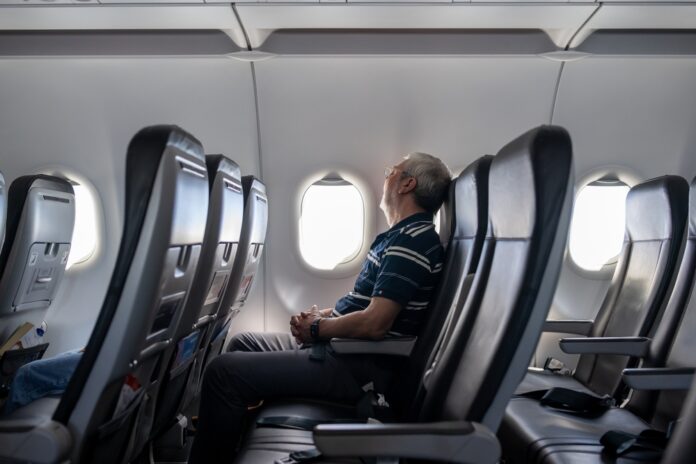Traveling in your golden years is an exciting opportunity to explore new destinations and create lasting memories. However, long flights can be challenging for seniors, especially when it comes to comfort and health. With the right preparations and accessories, you can make your journey as comfortable as your destination is enjoyable.
Consult Your Doctor Before Traveling
Before embarking on a long-haul flight, it’s important to consult with your physician. This ensures that you’re fit to travel and helps you address any medical concerns that could arise during the flight. Your doctor can provide advice on managing medications and suggest strategies to mitigate any health risks associated with flying.
Plan Ahead for Special Needs
Airlines are equipped to assist passengers with special requirements, but advanced notice is key. Be sure to contact the airline at least 48 hours before your flight to arrange for services such as wheelchair assistance, early boarding, or the use of medical equipment on board. This proactive approach can significantly reduce stress on the day of travel.
Pack Essential Comfort Items
Bringing the right accessories can make a world of difference on a long flight. Items like travel pillows, noise-canceling headphones, eye masks, and blankets are essential for creating a cozy personal space. According to travel experts, it’s advisable to carry personal devices preloaded with entertainment, as in-flight systems can sometimes be unreliable.
Invest in a Quality Travel Pillow
A supportive travel pillow can alleviate neck strain and help you rest more comfortably. In a comprehensive review, the Ostrichpillow Go Neck Pillow was highlighted for its superior neck support and plush comfort. Selecting the right pillow tailored to your needs can greatly enhance your in-flight experience.
Use an Airplane Footrest
Long periods of sitting can cause discomfort and swelling in the legs and feet. To improve circulation and reduce swelling, consider using an airplane footrest. Footrests can help maintain proper posture and provide relief from lower back pain during extended flights.
Stay Hydrated and Eat Lightly
The dry cabin air on airplanes can lead to dehydration, which may affect seniors more acutely. It’s important to stay hydrated by drinking water before and during the flight. Avoid excessive caffeine and alcohol, as they can contribute to dehydration. Bringing nutritious snacks that aren’t messy can also keep your energy levels up throughout the journey.
Wear Comfortable and Layered Clothing
Dressing in loose, comfortable clothing is essential for long flights. Cabin temperatures can fluctuate, so it’s wise to bring layers like cardigans or sweatshirts to adjust your comfort level as needed. Slip-on shoes can make it easier to move around the cabin and go through security checkpoints.
Consider Compression Socks
To further reduce the risk of swelling and blood clots, wear compression socks during the flight. These socks apply gentle pressure to your legs, promoting better blood flow and reducing discomfort.
Stay Active During the Flight
Sitting for prolonged periods can increase the risk of deep vein thrombosis (DVT). Make it a point to stretch and walk around the cabin periodically. Simple in-seat exercises, like ankle circles and leg lifts, can also help maintain circulation.
Prepare for Security and Boarding
Simplify your airport experience by storing important items like keys, wallet, and phone in your carry-on bag. This makes it easier to navigate security procedures and reduces the risk of misplacing personal belongings. Arriving at the airport early allows ample time to manage any unforeseen delays.
Manage Medications and Health Documents
Keep your medications in an easily accessible location within your carry-on. It’s also a good idea to take pictures of essential documents, such as your passport and medical information, so you have digital copies in case anything gets misplaced.
Optimize Your Seating Choice
Choosing the right seat can enhance your comfort significantly. For ease of access to the restroom and more legroom, consider selecting an aisle seat close to the bathroom. This minimizes disruptions to fellow passengers and allows you to move freely as needed.
Stay Entertained and Engaged
Bringing along entertainment options can make the flight go by faster. Whether it’s an e-reader loaded with books, a tablet with your favorite movies, or a journal for writing, keeping yourself occupied can enhance your travel experience.
Adjust to the Destination Time Zone
To minimize jet lag, adjust your watch to the destination’s time zone as soon as you board the plane. This psychological trick can help your body start to acclimate to the new schedule.
Conclusion
Long flights don’t have to be a daunting experience for seniors. By taking proactive steps to prepare, packing the right accessories, and making mindful choices during the journey, you can enjoy a comfortable and pleasant flight. With these tips, your next adventure awaits with open skies and open arms.


